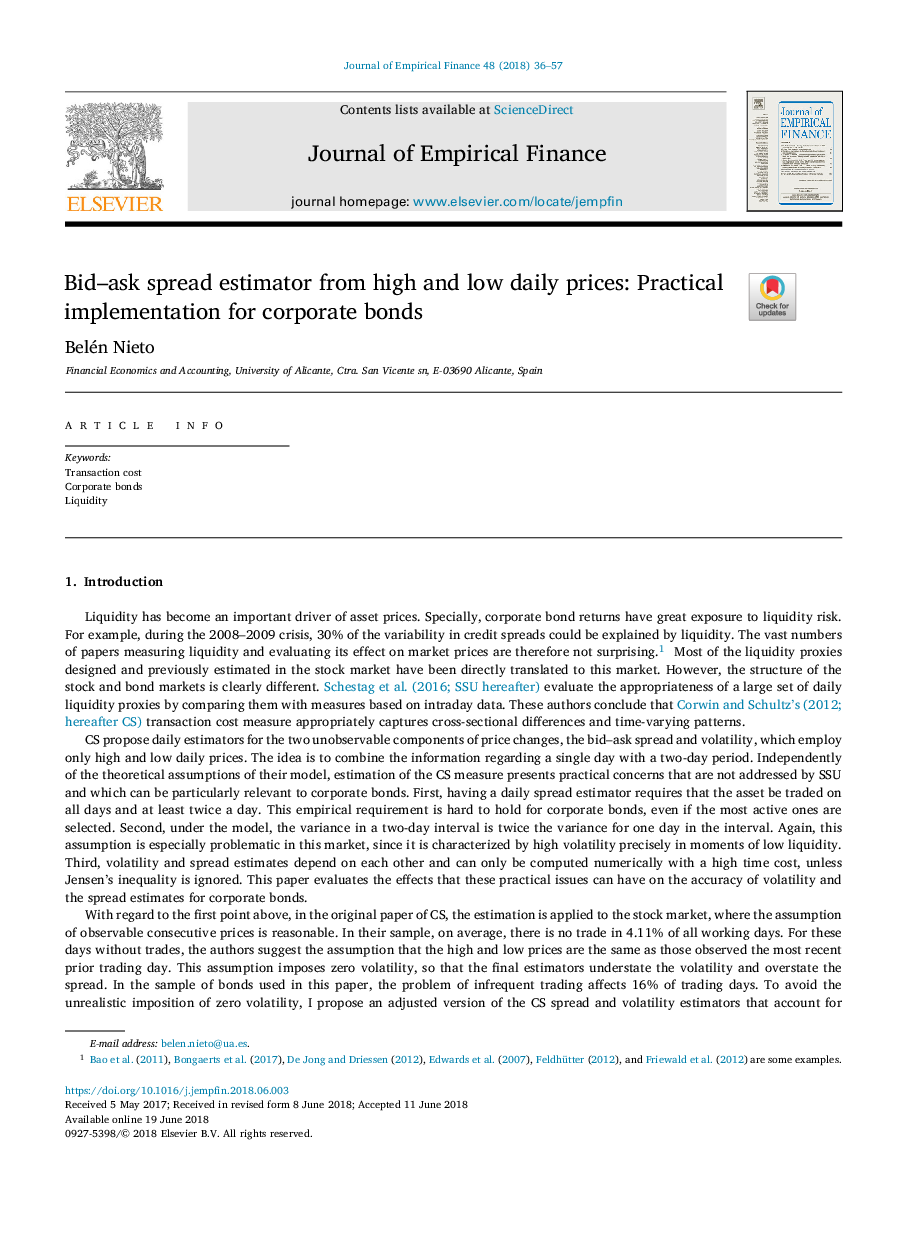| Article ID | Journal | Published Year | Pages | File Type |
|---|---|---|---|---|
| 7360402 | Journal of Empirical Finance | 2018 | 22 Pages |
Abstract
This paper evaluates the appropriateness of the standard methodology used to estimate the liquidity proxy proposed by Corwin and Schultz (2012) for the case of corporate bonds. These assets are infrequently traded, even when they are selected with activity requirements, and display great time-varying volatility during recession periods. However, the estimation of this liquidity proxy requires that the asset be traded daily continuously and that the volatility be proportional to the time interval. I propose a generalization of the original measure that allows for its practical estimation, even for non-continuous trading. The results show that this general version, estimated using information only from days with trades and discarding negative spreads, is more accurate than the standard one.
Related Topics
Social Sciences and Humanities
Economics, Econometrics and Finance
Economics and Econometrics
Authors
Belén Nieto,
